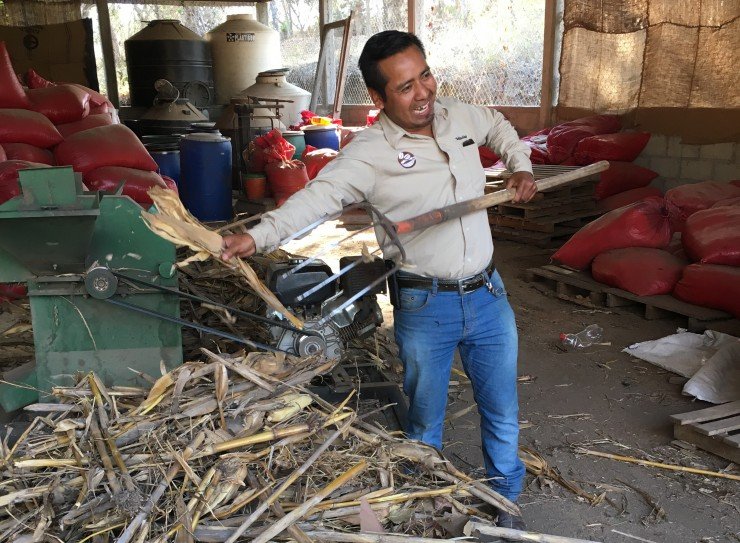RSF Social Finance Fair Trade Capital Collaborative
Purpose
The purpose of this project is to directly address two of the largest challenges within the fair trade coffee supply chain: coffee leaf rust and climate change. In collaboration with four farmer organizations in our supply chain, we have designed a hybrid grant and credit project through the RSF Social Finance Fair Trade Capital Collaborative that focuses on resilience. The total investment in our supply chain through this project is $200,000. The RSF Social Finance Fair Trade Capital Collaborative is a unique mix of grant funding to support direct agronomic training to members of these four organizations as well as credit to support ongoing farm renovation efforts. The three main points of focus in this work are technical assistance, improving advanced organic management, and widespread renovation efforts. We have linked this work to the following UN Sustainable Development Goals:
Goal 1: No poverty
Goal 2: Zero hunger
Goal 8: Decent work and economic growth
Goal 12: Responsible consumption and production
Goal 17: Partnership for the goals
Countries and producer partners
Mexico: Finca Triunfo Verde, Comon Yaj Noptic, and Café Ecológico de la Sierra Madre de Chiapas (CESMACH)
Honduras: Café Orgánico Marcala S.A. (COMSA)
Finca Triunfo Verde
FTV has named their coffee leaf rust technical package the “Recovery and renovation of smallholder organic coffee farms” and its three main components are good management of young/new farms, renovating old or disease-impacted farm that have been gravely impacted by roya, and technical assistance accompaniment. The credit and grant funds have been added to funds from the Secretary of Agriculture, Heifer International, and other sources to round out their project budget. FTV reports that the RSF dollars have been invested in the following activities:
Long-term financing for recovery and renovation of coffee farms
Financing for renovation (transportation, land prep, transplanting)
Investment in the management of young coffee farms as they begin to yield a coffee harvest
Applying a nutrition and soil amendment package
Shade regulation and management on farms
Workshops to strengthen production process in quality, post-harvest handling, and seed selection
Comon Yaj Noptic
Alonso Gomez Hernandez, a member of the CYN staff shows off some of the raw material that gets transformed into organic fertilizer.
As the smallest of the three cooperatives in this project, CYN has a slightly smaller scale and a longer timeline for renovation. In order to be very intentional in the renovation process and to give their farmer members enough time from beginning their farm renovation to seeing results in production levels, CYN chose to have a longer repayment schedule than CESMACH or FTV. Of the 160 members of CYN, 40 are actively renovating their farms and all of these have accessed credit through the FT Capital Collaborative.
To complement the renovation credits, CYN has a strong on-site program of manufacturing advanced organic inputs using microorganisms, macro and micronutrients, and farm outputs/waste material. The grant dollars received through the FT Capital Collaborative were used to acquire raw materials to be transformed by CYN staff as inputs for farmer members on their renovated plots. Farmers use the special organic products as foliar applications using backpack sprayers or apply them directly as soil amendments on their renovated areas with the assistance of the technical team at CYN to ensure higher levels of productivity and disease resistance.
CESMACH
Nursery supported through the Fair Trade Capital Collaborative at CESMACH.
The team at CESMACH has a very large-scale renovation project where they are producing approximately 850,000 coffee seedlings annually for their 600 members. The RSF Fair Trade Capital Collaborative loan dollars were used during the 2016-2017 cycle by 213 farmers to cover their costs as they prepared their land for transplanting seedlings, planted the young coffee plants, and managed the early stages of plant development after transplanting. The loan dollars supported 100 hectares worth of renovation out of a total of 283 hectares renovated in 2016-2017. Approximately 39% of the total renovated area was achieved with RSF credit and the rest was supported through the Secretary of Agriculture in Mexico (SAGARPA).
CESMACH repaid their loan plus interest in June 2017. To complement the massive renovation effort at CESMACH, they used the grant dollars to fund extension services, field schools, and their agronomists on staff. Staff at CESMACH incorporated the Fair Trade Capital Collaborative grant dollars into a larger renovation and rehabilitation effort that they have been working on since 2015. Their goal is to accompany farmer members before, during, and after renovation in field-based training to ensure higher productivity levels. During the coffee leaf rust crisis, farms averaged production rates of approximately 3-5 quintales/hectare. On renovated farms, productivity levels are reaching 12-15 quintales/hectare. Through renovation, adequate organic management, and varietal selection, CESMACH members are seeing productivity increase of 300-400% on their farms. We expect to see even higher levels of productivity over the next several harvests as farmers continue to use organic inputs, soil amendments, and foliar applications.
COMSA
Edwin Contreras of COMSA shows off one of his favorite plants on his farm. Edwin is one of the leaders of COMSA's experimental project in varietal recovery funded through the collaborative.
Our partners at COMSA are using the RSF Fair Trade Capital Collaborative dollars to conduct farm-level research to identify and recover varietals that demonstrate natural disease resistance, cup quality, and solid productivity levels. COMSA members and staff have explored advanced organic practices over the past several years and have engaged on a much deeper level than most in the area of biodynamic farming practices. Part of the visión of this project stems from their goals to find and reproduce healthy seeds that demonstrate a recovery in their energetic cellular memory.




